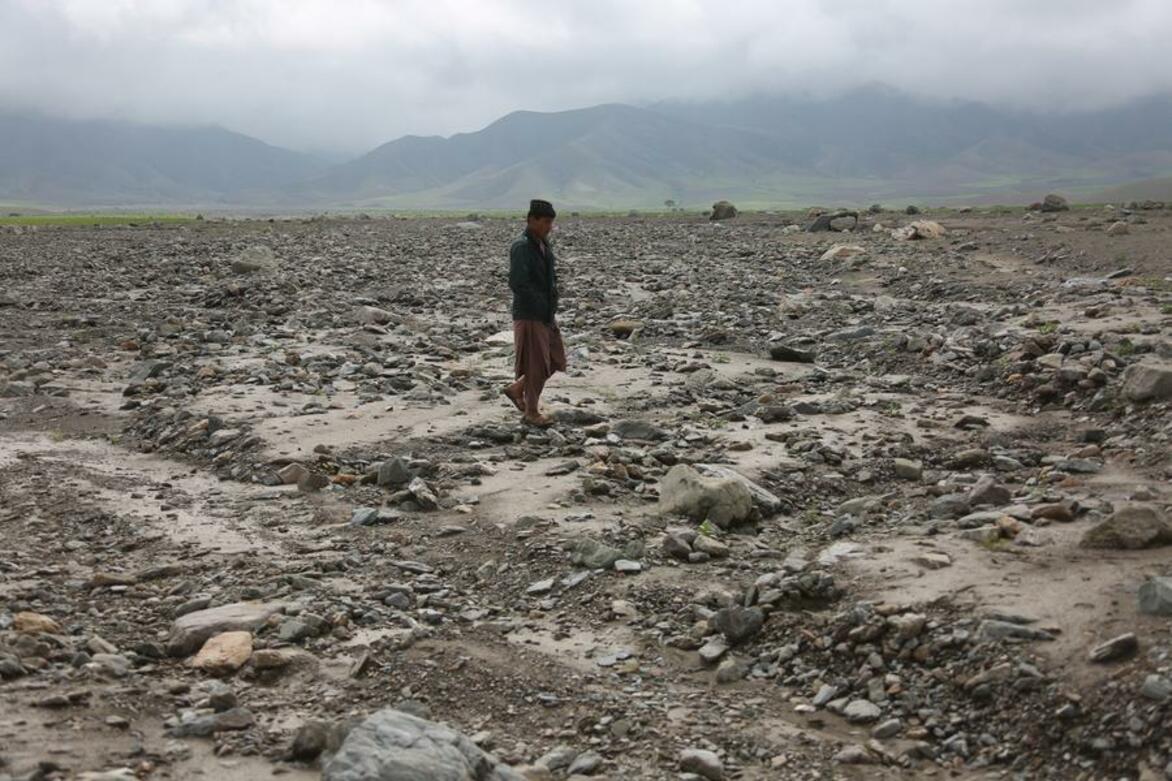Afghans at crossroads of climate crisis, deepening poverty
Xinhua
23 Apr 2025

A farmer walks in a flood-affected area in Burka district in northern Baghlan province, Afghanistan, April 20, 2025. (Photo by Saifurahman Safi/Xinhua)In 2024 alone, widespread drought and flooding have affected millions in northern and western Afghanistan, destroying thousands of hectares of farmland.KABUL, April 23 (Xinhua) -- Afghanistan is one of the world's most vulnerable countries to climate change, facing recurring droughts, sudden floods, and growing water scarcity that threaten the livelihoods of millions, particularly those who rely on agriculture.On Earth Day, Abdul Razzaq, a 56-year-old farmer from Burka district in northern Baghlan province, stood on his parched farmland and talked about droughts and unseasonal floods.Farmers work on agricultural land affected by recent floods in Burka district in northern Baghlan province, Afghanistan, April 20, 2025. (Photo by Saifurahman Safi/Xinhua)"When we sow our seeds here, we get nothing -- they dry up. Our wheat and crops burn, and we sit helpless in our homes," Razzaq told Xinhua. "For as long as I can remember, we've been experiencing droughts every two or three years, and if it rains, we survive, and if it doesn't, we have nothing."Razzaq is the breadwinner for his family of nine. A devastating flood destroyed his land last year, and he has yet to clear the stones left by the flood and resume farming. He is concerned about his family's livelihood."If the droughts continue and there's no rain, what will we do? Eat stones? There's nothing here. Sometimes hungry, sometimes not, we pass our day." He explained next to a large rock left over from the flood.According to the Notre Dame Global Adaptation Initiative, Afghanistan ranks among the seven countries most vulnerable to climate change. The ongoing environmental crisis is not only decimating crops but also threatening livestock and prompting mass displacement.People fetch water from a public water storage in a flood-affected area of Burka district in northern Baghlan province, Afghanistan, April 20, 2025. (Photo by Saifurahman Safi/Xinhua)Haji Egan Birdi, another local farmer, highlighted the broader social impact of drought in his village."Most of the men have left in search of work. Only the elderly and women remain," he said. "If the drought lasts, more people will be forced to leave."The situation is dire. In 2024 alone, widespread drought and flooding have affected millions in northern and western Afghanistan, destroying thousands of hectares of farmland.Abdulhadid Achakzai, director of the EPTDO, a local organization focused on environmental protection and development, said the situation is worsening rapidly."We conducted research in 29 provinces this year and found a significant drop in groundwater levels," he said. "Even in areas near rivers, the water is decreasing day by day."Achakzai emphasized that Afghanistan lacks the technical infrastructure and financial capacity to respond effectively to the climate crisis.Photo taken on April 20, 2025 shows flood-affected areas in Burka district in northern Baghlan province, Afghanistan. (Photo by Saifurahman Safi/Xinhua)Meanwhile, Afghanistan's environmental authority has confirmed the escalating climate threats."Rising temperatures, shifting rainfall patterns, declining agricultural and livestock productivity, melting glaciers, and biodiversity loss are among the consequences endangering multiple sectors," said Engineer Ruhullah Amin, head of climate change at the National Environmental Protection Agency.As the dual challenges of climate change and poverty deepen, Afghans are left to navigate an increasingly uncertain future.
